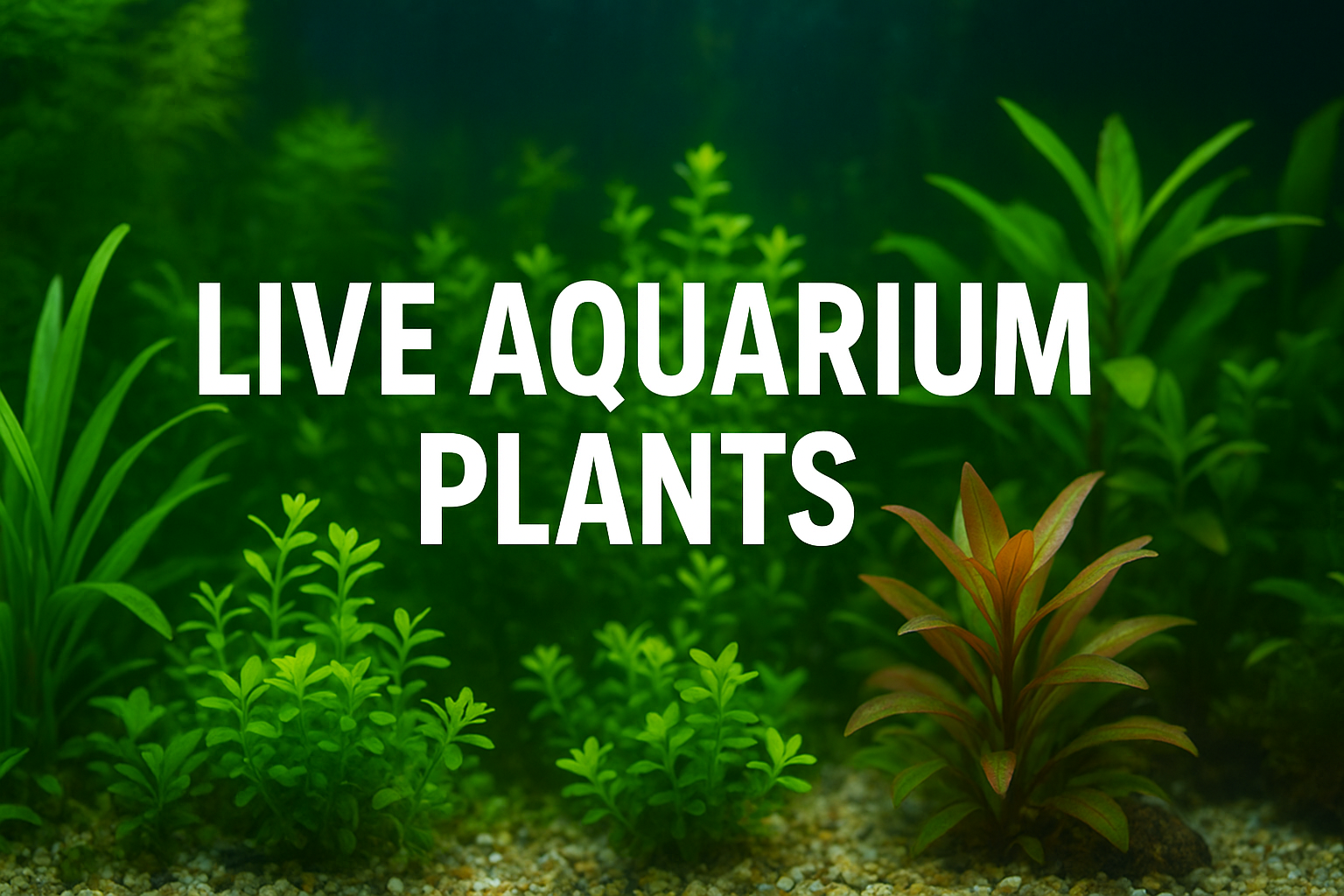Aquarium enthusiasts are always looking for ways to create a healthier and more beautiful environment for their fish. One of the best ways to achieve this is by adding live aquarium plants. These natural additions not only enhance the aesthetics of your tank but also provide numerous benefits for the aquatic ecosystem. Unlike artificial decorations, live plants are functional, dynamic, and constantly growing, making your aquarium look more natural and balanced.
In this comprehensive guide, we will explore the importance of live aquarium plants, their benefits, popular types, planting methods, and maintenance tips to help you succeed in creating a lush underwater paradise.
Why Choose Live Aquarium Plants?
Live aquarium plants offer advantages that artificial plants simply cannot match. They serve as living filters, oxygen sources, and natural hiding spots for fish. Here are some key reasons to choose live plants for your aquarium:
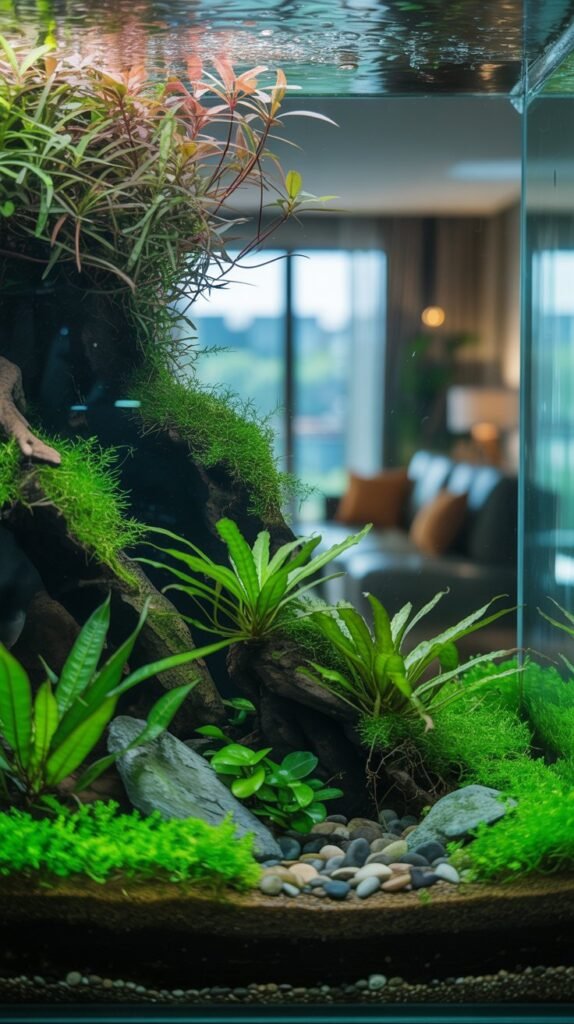
- Improved Water Quality
Live plants absorb excess nutrients such as nitrates, ammonia, and phosphates, which helps prevent algae growth and keeps the water clear and balanced. - Natural Oxygen Supply
Through photosynthesis, plants release oxygen into the water during the day, which improves the overall health of your fish and beneficial bacteria. - Reduced Stress for Fish
Plants provide hiding places and shelter, which reduce fish stress and aggression, especially in community tanks. - Natural Beauty
Live plants create a realistic, lush environment that enhances the overall look of your aquarium. - Balanced Ecosystem
A planted tank supports a self-sustaining ecosystem, making the aquarium healthier and easier to maintain in the long run.
Types of Live Aquarium Plants
There are hundreds of plant species that can be used in aquariums, but they can generally be categorized into three main types: foreground, midground, and background plants. Choosing the right combination will help create depth and balance in your aquascape.
1. Foreground Plants
These are low-growing plants placed at the front of the aquarium to cover the substrate.
- Examples: Dwarf Hairgrass, Java Moss, Monte Carlo, Anubias Nana Petite.
- Purpose: They act like a carpet, creating a lush green look.
2. Midground Plants
These plants are medium in height and are placed in the center of the aquarium.
- Examples: Cryptocoryne, Amazon Sword (young), Hygrophila species.
- Purpose: They add density and make the aquarium look full and natural.
3. Background Plants
These are tall plants that grow at the back of the aquarium.
- Examples: Vallisneria, Amazon Sword, Ludwigia, Hornwort.
- Purpose: They act as a backdrop, hiding equipment and creating a natural wall of greenery.
Popular Live Aquarium Plants for Beginners
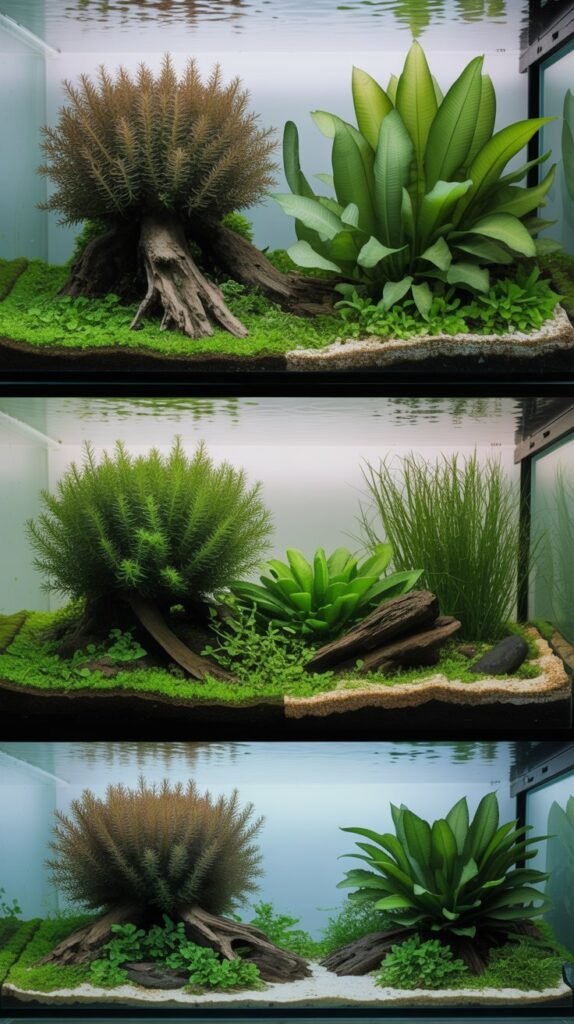
If you’re new to live plants, start with hardy species that require minimal care. Some of the most beginner-friendly options include:
- Java Fern (Microsorum pteropus) – Grows well in low light, does not need substrate planting.
- Anubias – Hardy and resistant to algae, can be attached to driftwood or rocks.
- Amazon Sword (Echinodorus amazonicus) – A classic plant with large leaves, perfect for background planting.
- Hornwort – A floating or planted plant that grows quickly and prevents algae growth.
- Cryptocoryne – Easy to care for and comes in many varieties with attractive colors.
Planting Live Aquarium Plants
Planting methods vary depending on the type of plant. Some need to be rooted in the substrate, while others attach to hardscape like rocks or driftwood.
Substrate Plants
- Plants like Amazon Sword and Cryptocoryne should be planted in a nutrient-rich substrate.
- Avoid burying the crown of the plant (the area where the stem meets the roots).
Rhizome Plants
- Plants like Java Fern and Anubias should not be buried in substrate. Instead, tie or glue them onto rocks or driftwood.
Floating Plants
- Plants like Duckweed, Frogbit, and Hornwort float on the water surface, providing shade and reducing algae growth.
Carpet Plants
- Plants like Dwarf Hairgrass or Monte Carlo require good lighting and CO2 for dense carpeting.
Aquarium Conditions for Live Plants
For plants to thrive, you must provide suitable conditions:
- Lighting
- Low light plants (Java Fern, Anubias) require minimal light.
- Medium to high light plants (Amazon Sword, carpeting plants) need stronger light.
- LED aquarium lights are ideal as they are energy-efficient and customizable.
- Nutrients
- Plants absorb nutrients from the water and substrate.
- Consider using root tabs, liquid fertilizers, or nutrient-rich substrates.
- CO2 Injection
- Some plants grow fine without CO2, but adding CO2 can greatly boost growth and plant health.
- Water Parameters
- Most live aquarium plants thrive in pH 6.5–7.5 and temperatures of 72–82°F (22–28°C).
Benefits of Live Aquarium Plants for Fish
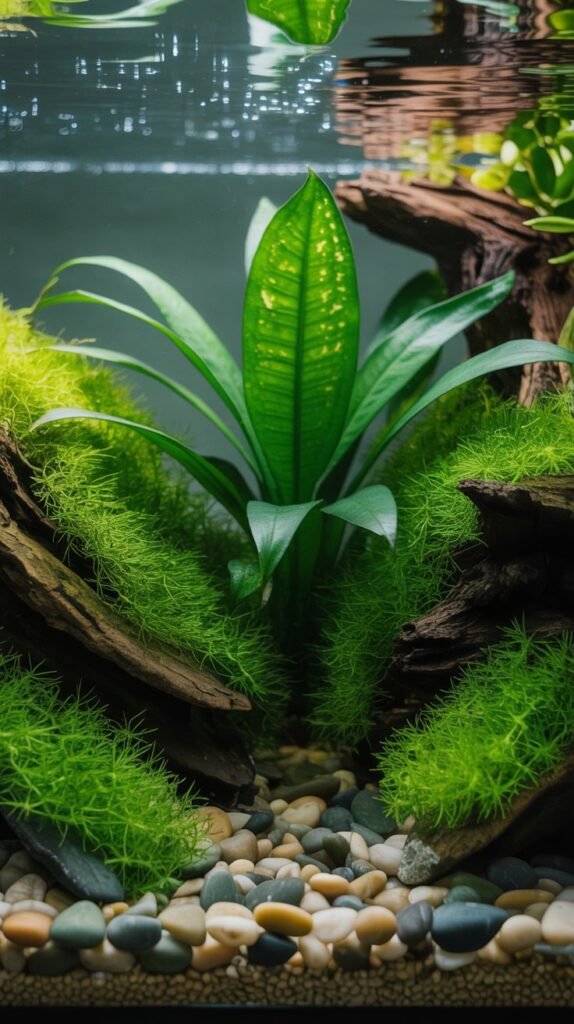
Adding live plants isn’t just about aesthetics—it directly benefits fish:
- Improved Breeding Conditions: Many fish lay eggs on plant leaves or use them for protection.
- Reduced Stress: Hiding spots help shy or bullied fish feel safe.
- Food Source: Some fish nibble on plants or microorganisms growing on them.
- Cleaner Water: Plants reduce toxins, keeping fish healthier.
Common Problems with Live Aquarium Plants
Even hardy plants may face some issues:
- Algae Growth – Caused by too much light or excess nutrients.
- Solution: Reduce light hours, add algae-eating fish like Amano shrimp or Siamese algae eaters.
- Yellowing Leaves – Indicates nutrient deficiency, usually nitrogen or iron.
- Solution: Add appropriate fertilizers.
- Melting – Some plants, especially Cryptocoryne, “melt” when first introduced.
- Solution: Be patient—new growth will adapt to your tank conditions.
- Poor Growth – Can be due to lack of CO2, insufficient lighting, or wrong substrate.
Tips for Maintaining Live Aquarium Plants
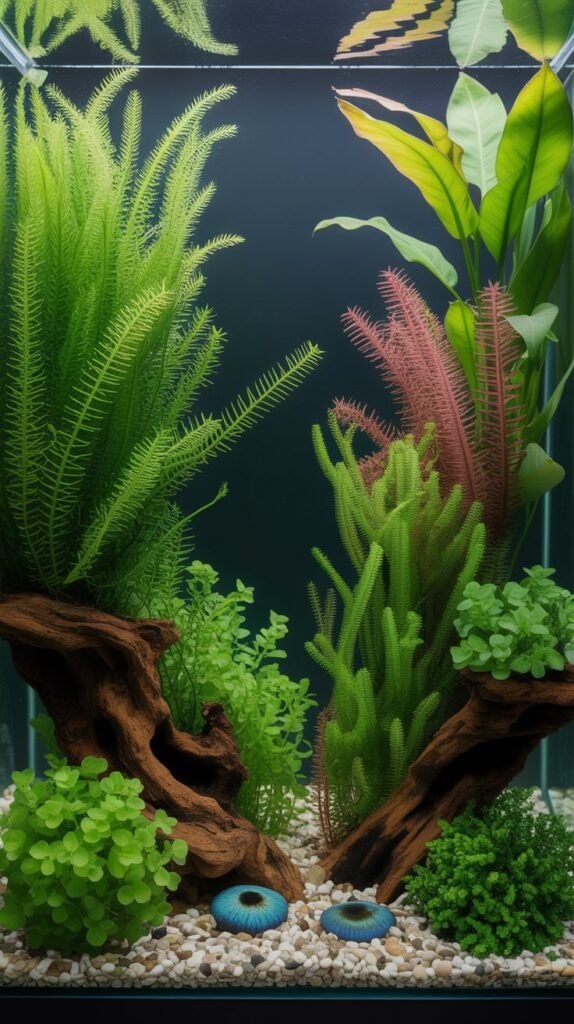
- Perform regular water changes (20–30% weekly).
- Trim overgrown plants to prevent crowding and allow light penetration.
- Monitor water parameters regularly.
- Clean algae from leaves with soft brushes.
- Ensure proper fish-plant balance; avoid keeping too many plant-eating fish.
Advanced Aquascaping with Live Plants
For hobbyists who want to take their aquarium to the next level, aquascaping offers endless possibilities. Techniques like Dutch style aquascaping, Iwagumi layouts, and Jungle-style tanks heavily rely on live plants to create natural underwater landscapes. By combining different plant species, driftwood, and rocks, you can design a living piece of art.
Conclusion
Live aquarium plants are more than just decorations—they’re an essential part of a thriving aquatic ecosystem. From improving water quality and oxygen levels to providing shelter and enhancing the natural beauty of your aquarium, they offer countless benefits. With proper care, lighting, and nutrients, live plants can transform your aquarium into a lush, healthy, and vibrant underwater world. Whether you’re a beginner or an experienced aquarist, incorporating live plants will always be a rewarding choice.
FAQs About Live Aquarium Plants
Q1: Are live aquarium plants hard to take care of?
No, many species like Java Fern, Anubias, and Hornwort are easy to maintain and perfect for beginners.
Q2: Do live aquarium plants need special lighting?
Not always. Some plants thrive in low light, while others require stronger LED lighting.
Q3: Can I use regular soil for aquarium plants?
It’s not recommended. Aquarium plants need nutrient-rich substrates designed for underwater growth.
Q4: Do aquarium plants need CO2 injection?
Not all plants need CO2. Beginner plants can survive without it, but CO2 improves growth and appearance.
Q5: How do I prevent algae on live plants?
Limit lighting hours, balance nutrients, and introduce algae-eating fish or shrimp.
Q6: What fish are safe with live plants?
Most community fish are plant-safe, but avoid goldfish, cichlids, and silver dollars, as they may uproot or eat plants.
Q7: Can live plants replace a filter?
No, but they help reduce toxins and support filtration, making the aquarium healthier.

